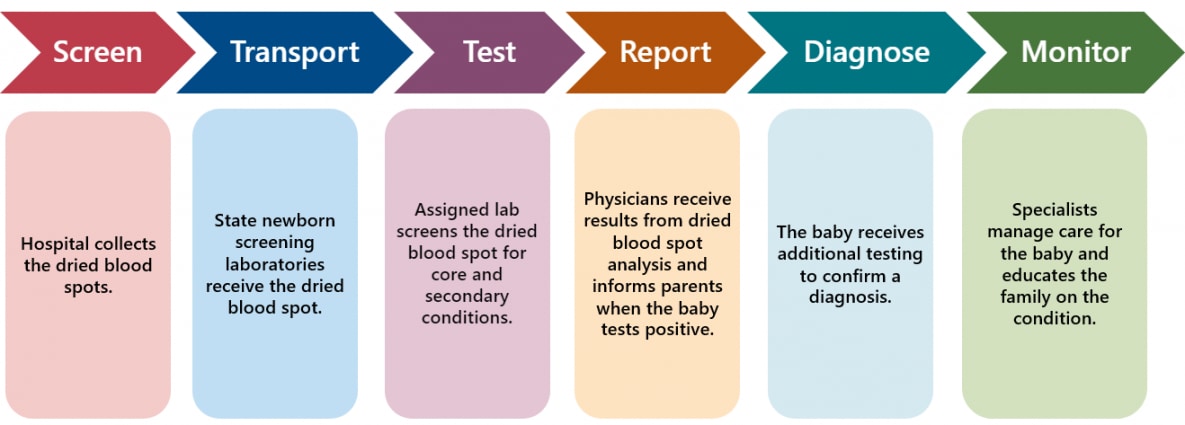At a glance
CDC helps state newborn screening programs be prepared for emergencies that could disrupt normal operations.

Background
According to CDC's National Center for Health Statistics,1 nearly four million babies are born each year in the U.S. Every day babies are screened for 33 or more treatable disorders2 and each year nearly 13,000 babies receive a diagnosis. Even when unexpected public health threats emerge, it's important for newborns to be screened within 24-48 hours of birth to allow for early treatment and management for affected newborns. State and local health departments must stand ready to handle different types of emergencies that threaten the health and resilience of families, communities, and the nation.
There are various emergencies that might disrupt normal operations of newborn screening program laboratories. These could include natural disasters such as hurricanes or earthquakes or workplace emergencies such as a power outage or cyberterrorism. Newborn screening programs require a unique plan to quickly identify and mitigate the effects of the emergency on laboratory operations.
Why should newborn screening programs prioritize emergency preparedness?
In 2005, Hurricane Katrina destroyed Louisiana's state public health laboratory and eliminated the state's ability to perform newborn blood spot screening, which caused a major disruption in screening, diagnosis, and follow-up for several weeks.3 One of the lessons learned from that experience is that a back-up system or contingency plan is essential to keep this critical service functioning in the event of a public health emergency.
A national contingency plan for newborn screening
A national contingency plan (CONPLAN) for newborn screening was created to serve as a framework for organizations to address potential disruptions in the newborn screening system during an emergency. CDC developed the CONPLAN in partnership with Health Resources and Services Administration (HRSA), State Departments of Health and newborn screening experts within various organizations.
The CONPLAN is a highly detailed document that captures the vast newborn screening network in eight key strategic objectives, as seen in the flowchart below. Due to the time-sensitive nature of the screening process, it is important to identify the challenges that may arise at each step and to know how to handle them.

